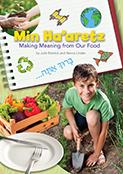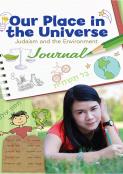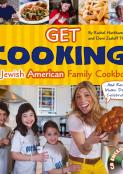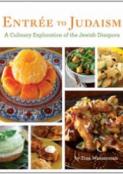- Home
- Play & Learn Home
- Online Enrichment
- Experience Modern Israel
- Israel It's Complicated
- Jewish and Me
- Jewish Holidays Jewish Values
- Jewish Values in Genesis and Jewish Values in Exodus
- Min Ha’aretz
- Our Place in the Universe
- Simply Seder
- The Prophets: Speaking Out for Justice
- Making T'filah Meaningful
- Make, Create, Celebrate
- Yom Haatzmaut Resources
- Hebrew Apps
- About The OLC
- What is the OLC?
- Introduction
- Get Started
- Resources
- OLC Content
- Parent Materials
- See My OLC Classes
- Store
Food for Thought: Making Mindful Connections to Our Passover Meals
Written by Behrman House Staff, 19 of April, 2016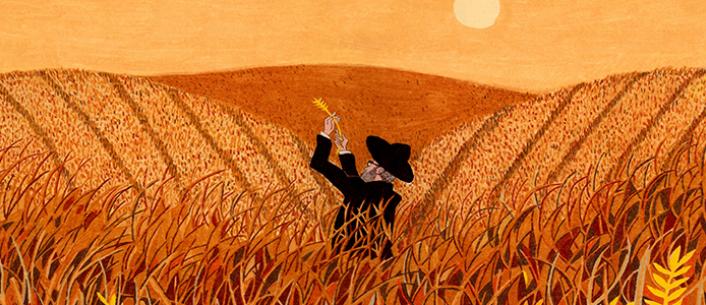 Art Credit: Andrew Chuani Ho of The New York Times
Art Credit: Andrew Chuani Ho of The New York Times New Student Journal Connects Students with Jewish Values and Food
Wrestle through Environmental Dilemmas, Reflect on the Values in our Holidays using New Student Journals
A well-known New York chef recently embarked on a mission to explore why some matzah—at least in his opinion—tastes better than others. He had enjoyed shmura matzah, which means "guarded” or “watched,” and in tracing the matzah back from the bakery to the field where the wheat grew, found a new appreciation for the entire matzah-making process.
Guarding against chametz begins with the grain, from harvest through to milling. Rabbinic scrutiny ensures that the wheat ripens in the field without use of mechanical driers or chemicals, and is harvested at the ideal moment when moisture content is between 13 and 15 percent.
"The requirement for close inspections means I’m observing things that would otherwise go unnoticed,” said Klaas Martens, a grain farmer, in the New York Times story. “I apply it to other crops, not with the same vigilance but with … I don’t want to sound corny, but it’s mindfulness. Mindfulness is a part of all my work now, and it benefits just about everything I grow.”
The rabbinic strictures forced the farmer to find ways to better preserve the quality of the grain, leading to farming techniques that encourage crop diversity and soil improvement for everything else he grows the rest of the year. The attention to detail in growing the grain for shmurah matzah has raised the consciousness not just of the farmer, but of people like the chef who can literally taste the difference.
Beginning this Passover with the first bite of matzah—whether it's shmurah or not—experiment with being more aware of how that morsel came to be. Then you can help children make connections between what they eat, the environment, and Jewish values.
Through journaling, activities and text sources, Min Ha'aretz: Making Meaning from Our Food helps pre-teens consider how the most basic of all human needs—eating—ties into Jewish values. Written by Hazon, the leading Jewish sustainabilty organization in North America, Min Ha'aretz fosters discussion of the ways contemporary and Jewish values can help us make choices and connects students to the spiritual meanings that we can gain through our food choices.
Our Place in the Universe: Judaism and the Environment guides students to think critically about how they live in the world. Children learn to draw insights from Jewish texts, ideas, and practices as they formulate their own positions on modern dilemmas such as climate change, conservation, and other environmental issues.
As you're preparing your Passover menu, check out these culinary resources to whet your appetite:
Get Cooking!
Celebrate Jewish American culture with fun, food, and Mama Doni music. Perfect for families with kids who want to cook.
Entrée to Judaism: A Culinary Exploration of the Jewish Diaspora
More than 275 easy-to-follow recipes by Tina Wasserman, along with stories about how Jewish communities has told stories through food.
Entrée to Judaism for Families: Jewish Cooking and Kitchen Conversations with Children
Essential tools for helping children learn to cook with confidence. Each recipe is a story, sharing the rich history of the communities that created the food.
Click here to read the full New York Times story, "Why is This Matzo Different from All Other Matzos?"

